Photo courtesy of Flickr User Tristan Loper under a creative commons license.
County loses appeal; sixth ruling in close to a decade; CAP offset program is not legal
Since 2012, Sierra Club has been challenging the County’s Climate Action Plans as being inadequate to meet the state’s emissions mandates. Sierra Club has prevailed every time. This last ruling has implications on both our local air quality, climate and how we choose to grow as a County: infill-oriented, sustainable growth or inefficient, congestion-inducing sprawl in the highest risk wildfire areas of the County. This is an update of an earlier article to reflect the most recent ruling (June 2020) in favor of Sierra Club by the court of appeals.
THE BEGINNING, A SMART GROWTH GENERAL PLAN:
The story starts back in 2011 when the General Plan of San Diego County was approved. After 13 years and $18 million worth of studies, the County approved its General Plan (GP). The process involved over 700 public workshops, clinics and meetings with diverse stakeholders from the building industry working group to real estate professionals to communities, affordable housing advocates, renters and environmental groups. The general plan, a document that is required under state housing law, generally maps out where housing and transportation will be located. The county’s general plan focuses exclusively in the unincorporated areas of county. The 18 cities in San Diego County have their own GPs that are independent of the county’s plan. This updated GP wisely focused on reducing sprawl by shifting housing westward closer to transit corridors, jobs and existing villages, closer to the urban core.
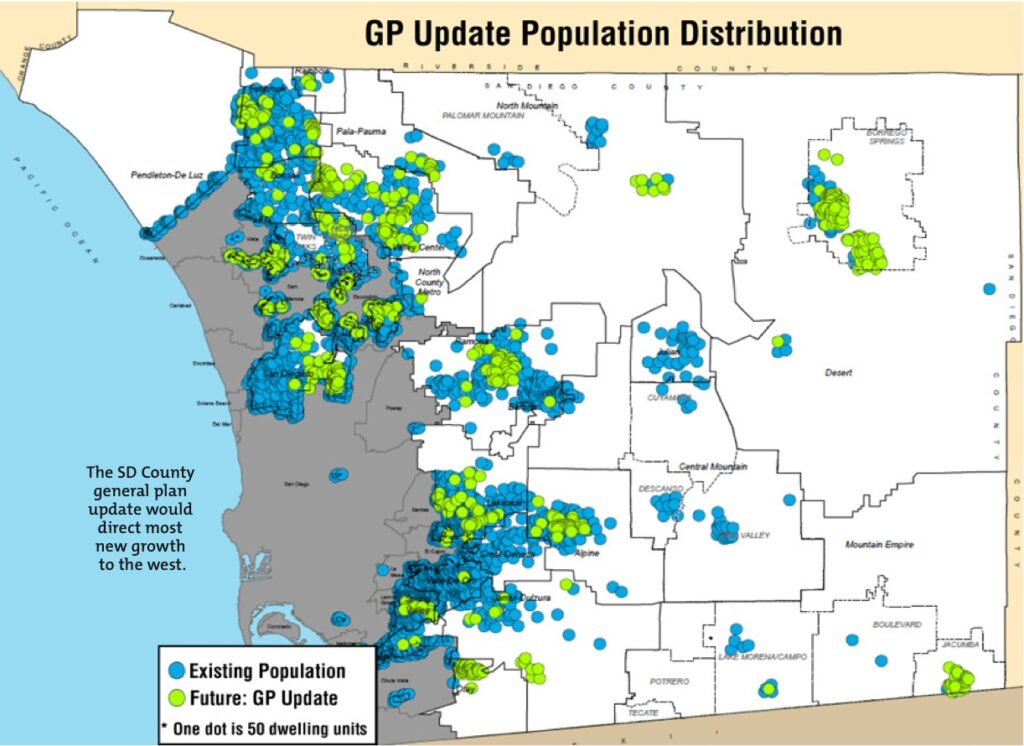
It kept rural areas at lower densities to encourage more infill while adding density where it made the most sense. In other words, it followed forward-thinking smart growth and planning principles intended to reduce sprawl and thus congestion, wildfire risk, pollution and infrastructure costs. According to the County’s general plan document, it would cut 550,000 metric tons a day by reducing new road construction by 780 lane miles and eliminating, potentially, up to three million vehicle trips a day. This GHG reduction is at the heart of the Sierra Club lawsuit.
The General Plan recommends moving future growth away from the rural eastern parts of the backcountry and toward communities like Ramona and Alpine that lie on San Diego’s urban interface. It also recommends focusing growth in the core of these communities — in clustered developments — rather than scattering new development over open space.
KPBS, October 18, 2010, Much At Stake In San Diego County’s General Plan Update
It was a consensus-based compromise that left the building industry complaining that it made it too hard to build while some environmental groups felt it did not go far enough. It was approved by the Board of Supervisors, 4 to 1, with Supervisor Horn dissenting.
The GP was designed to limit sprawl (and the associated driving it generates) which is widely considered to be one of the leading contributors to increased greenhouse gas (GHG) emissions with transportation being the single largest contributor to GHG emissions in California.
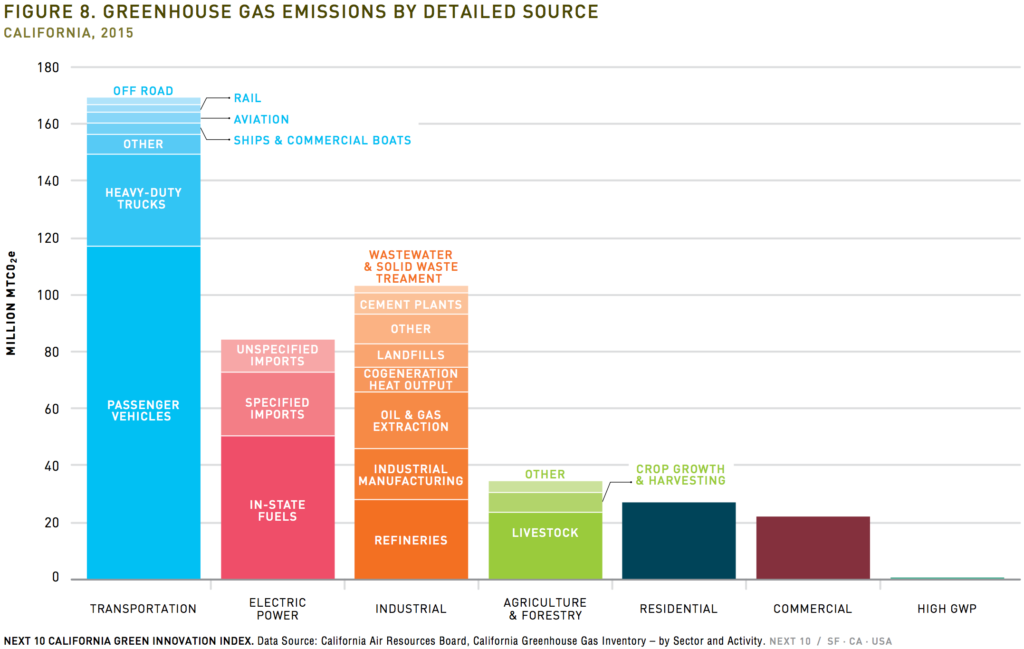
According to SANDAG’s “(not so) Brief Guide of Vehicular Traffic Generation Rates for the San Diego Region,” each single family home generates 10 average daily trips and the higher the distance from amenities and jobs, the more vehicle miles (VMTs) traveled. In fact, California has had trouble meeting its greenhouse gas reduction goals, largely due to an increase in driving due to bad land use policies. A slew of bills from the state legislature have aimed to shift land use patterns to reduce VMTs by reducing sprawl and encouraging infill and the County’s GP specifically is designed to comply with such legislation. The most recent bill, SB743, changes how jurisdictions analyze project traffic to focus specifically on VMT instead of the congestion-oriented level-of-service analysis.
To build projects outside of the General Plan requirements requires a costly and laborious General Plan Amendment (GPA) process. Because the general plan itself has already studied, internalized and mitigated the impacts of development (on fire safety, GHG, air quality, etc.) through the costly $18 million process, any amendment requires a thorough analysis of impacts that were not analyzed in the GP. The idea is that developers who propose GP-compliant projects don’t have to jump through as many hoops. The impacts have already been analyzed and mitigated for. If they choose to diverge from the plan and build in areas not considered by the GP, it requires that developers prove these exceptions will be in the public interest and not hazardous to residents. They are required to study the many impacts of their projects and mitigate them if they are found to be significant. And those amendments have to be approved by the Board of Supervisors with the approval of 3 or more supervisors.
The goal of the general plan is to incentivize developers to build more “by right” infill or GP-compliant projects, which are generally better for the region (less congestion, less pollution, less emissions, less infrastructure spending and less destruction of agricultural or open space land) and as a bonus, requires less impact analysis and fees for the developer while also meeting state mandates on emissions and air quality.
GPA GOLD RUSH:
Some developers and investors, however, saw the GP as an opportunity to acquire rural land whose value was reduced of the downzoning in the plan, and gamble on a developer-friendly Board of Supervisors to grant them a density increase for an instant windfall by virtue of a government-sanctioned zoning change. Many GPA projects were proposed almost immediately and began winding their way through the County’s planning approval process. These included Lilac Hills, Newland Sierra (the formerly rejected Merriam Mountains) as well as Otay 250, Harmony Grove Village South and Warner Ranch among numerous others – upwards of 21 projects with over 14,000 homes being proposed in areas where the GP specifically intended to limit development. Collectively, these 21 project undermine the entire premise of the general plan. For developers, the GPA projects, being incremental to the original plan for growth, require lengthy, costly environmental impact reports (EIR) to analysis the impacts that had not been accounted for in the General Plan. And they require mitigating those impacts whether they be fire safety, biological or climate change related.
For the most part, state law allows General Plan Amendments, but they are meant to be the exception, not the rule and, in fact, state law limits them to 4 per year in order to preserve the integrity of the original publicly developed plan. Allowing GPAs, the state recognizes that things on the ground sometimes change and the GP can be amended if and when that happens. Generally, amendments are intended to allow the County to update their plan gradually based on changing conditions. But private developers also use GPAs to make changes for their convenience and to benefit their investors, not necessarily for the public good.
There were so many privately initiated GPAs in the pipeline that the County chose a controversial tactic of “bundling” multiple GPA approvals into one GPA to circumvent the state limitation of 4 per year. Upwards of 21 projects and 14,000 homes were being proposed in the next few years. The tactic of bundling has been challenged in court by several lawsuits opposing the projects.
COUNTY’S CLIMATE ACTION PLAN, A BAD TRACK RECORD:
In the meantime, the state required jurisdictions to come up with their own Climate Action Plans which are needed to achieve state mandates for greenhouse gas (GHG) reduction pursuant to Senate Bill 32, Assembly Bill 32 and the subsequent Senate Bill 375 (Sustainable Communities Act). It requires creating an inventory of emissions and a plan to reduce emissions pursuant to state law. 45% of San Diego County’s emissions come from on-road transportation.
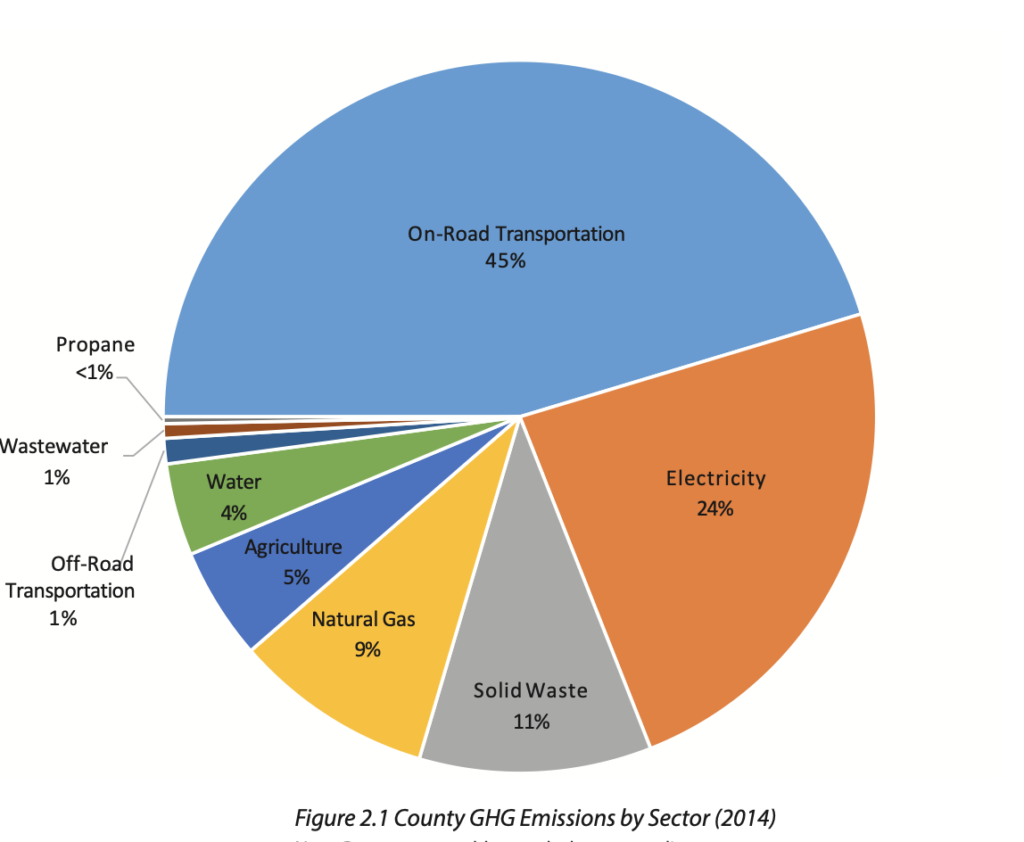
The CAP is meant to be complementary to the general plan and requires doing an inventory of current and proposed GHG emissions for a jurisdiction and a clear plan to reduce GHG emissions to 40% below 1990 emissions by 2030. Following the approval of the General Plan in 2011, the County produced its first Climate Action Plan in 2012 which took into account the state and the General Plan’s goals of GHG reduction. The Sierra Club promptly sued the County and Superior Court judge Timothy Taylor ruled in Sierra Club’s favor. According to the filing, this plan did not contain “enforceable GHG reduction measures that would achieve the specified emissions reductions.” The County appealed the decision all the way to the Supreme Court of California who ultimately declined to hear the case and the ruling stood. In 2015, the County was forced to pay Sierra Club’s legal fees (upwards of $1 million) and to create a whole new Climate Action Plan.
KPBS Midday Edition, October 31, 2014, Court Rules Against San Diego County Climate Action Plan
A new and improved CAP gave sprawl developers the option of unlimited GHG offsets anywhere in the world.
In 2017, the County presented a relatively more aggressive CAP for public review and again, significant flaws were found. Despite many letters and recommendations by environmental groups (including the Sierra Club and Climate Action Campaign), the County approved the plan on February 14th of 2018. It was approved with an important loophole that made it much easier to approve projects that increased GHG emissions significantly.
The loophole was the ability for general plan amendment projects to buy their way out of their (significant) carbon emissions impacts by purchasing carbon credits. Carbon credits have been touted as a way to offset GHGs by supporting carbon-reducing sustainability projects in other locations around the world that would counteract the carbon emissions of a given project. Carbon credits, to begin with, are controversial and recent studies indicate that they may do little to nothing to reduce emissions (upwards of 75% of the projects were going to occur regardless of the credits). A recent in-depth investigative report by ProPublica’s Lisa Song shows that many carbon offset projects are, in essence, a sham. Scientific American notes that as much as a third of all Kyoto Protocol carbon offset credits ever sold to banks and governments could be illegitimate because they were generated by firms manipulating the marketplace
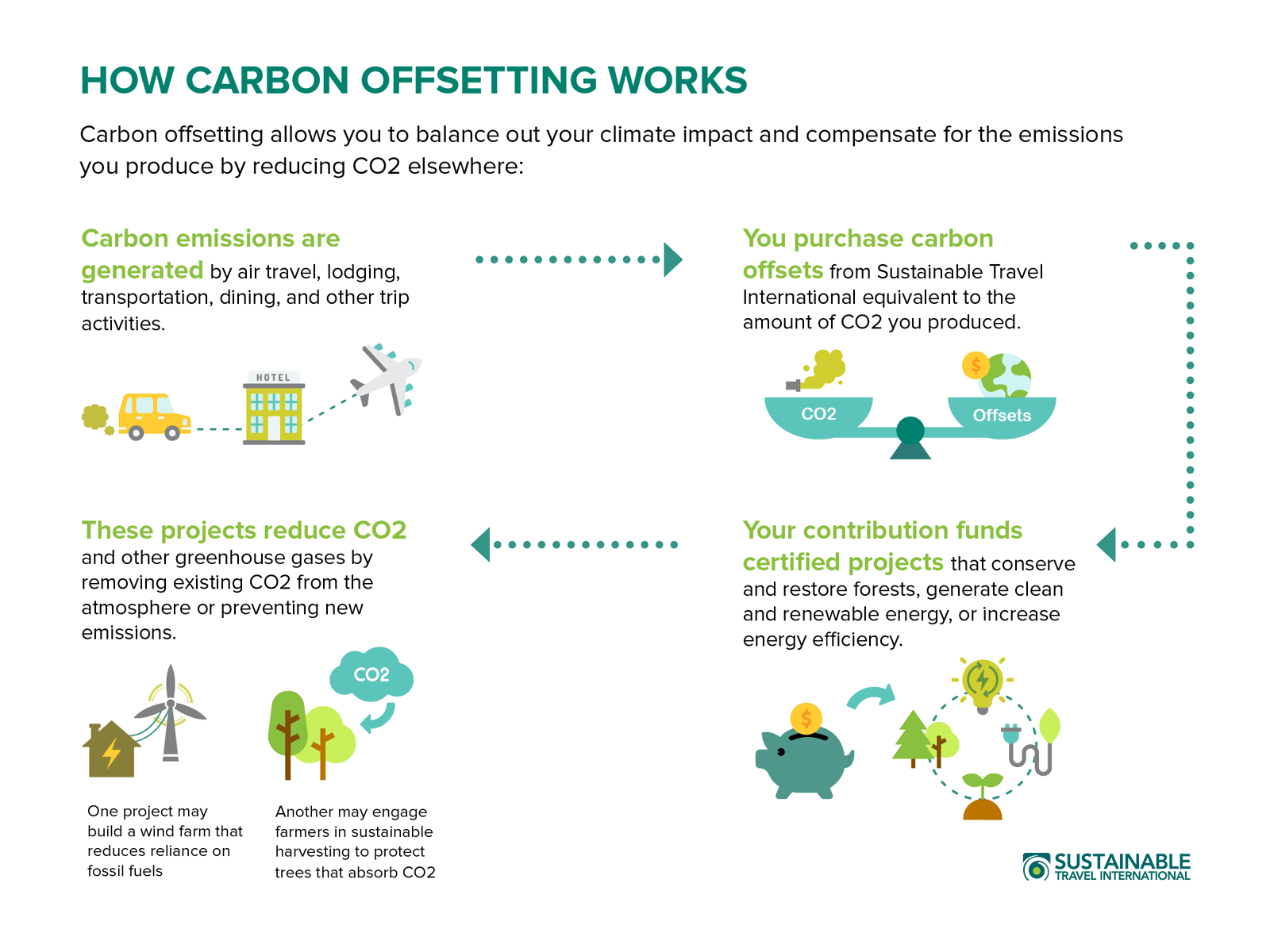
San Diego County’s new CAP greenhouse gas mitigation scheme, known as M-GHG-1, allowed virtually unlimited GHG offsets and required little to no verification or proof of the offset. It used an escalating tier of mitigations ranging from onsite improvements (electric car chargers in the project for example) to local carbon credits to out-of-county credits, out of state and even international carbon credits, all pending feasibility. Not only did it allow developers unlimited use of carbon credits, it did not include any mechanism to ensure these projects would be legitimate, permanent and otherwise incremental. It, in fact, relied on the discretion of the “planning director” to decide whether or not particular offset projects would qualify. But most importantly, it contradicted the General Plan which required that mitigation be local and rigorous.
This is important because the conditions that increase GHGs have local impacts such as increased pollution, destruction of habitat, decreased air and water quality, all of which inevitably impact quality of life. And they especially impact underprivileged communities disproportionately. So while, GHG reduction is a global priority, allowing carbon offsets outside our region basically creates hazardous conditions locally while improving the environment elsewhere. Studies show that California’s off-set program has had a detrimental impact on lower income and underprivileged communities because the projects seeking mitigation tend to be in communities of concern.
While the state of California has a “cap and trade” rule under AB 32 that allow polluters to purchase carbon offsets, it is limited to no more than 8% of the reductions required of a specific entity. In other words, it is meant to be supplemental not the principle reduction methodology; most reductions would need to come from direct action. And at least 50% of those offsets would need to come from within state; and no foreign offsets are allowed. The County’s mitigation (M-GHG-1) scheme has no such restriction nor geographical limitation. In fact some of the projects in question are proposing mitigating almost 100% of their GHGs via offsets.
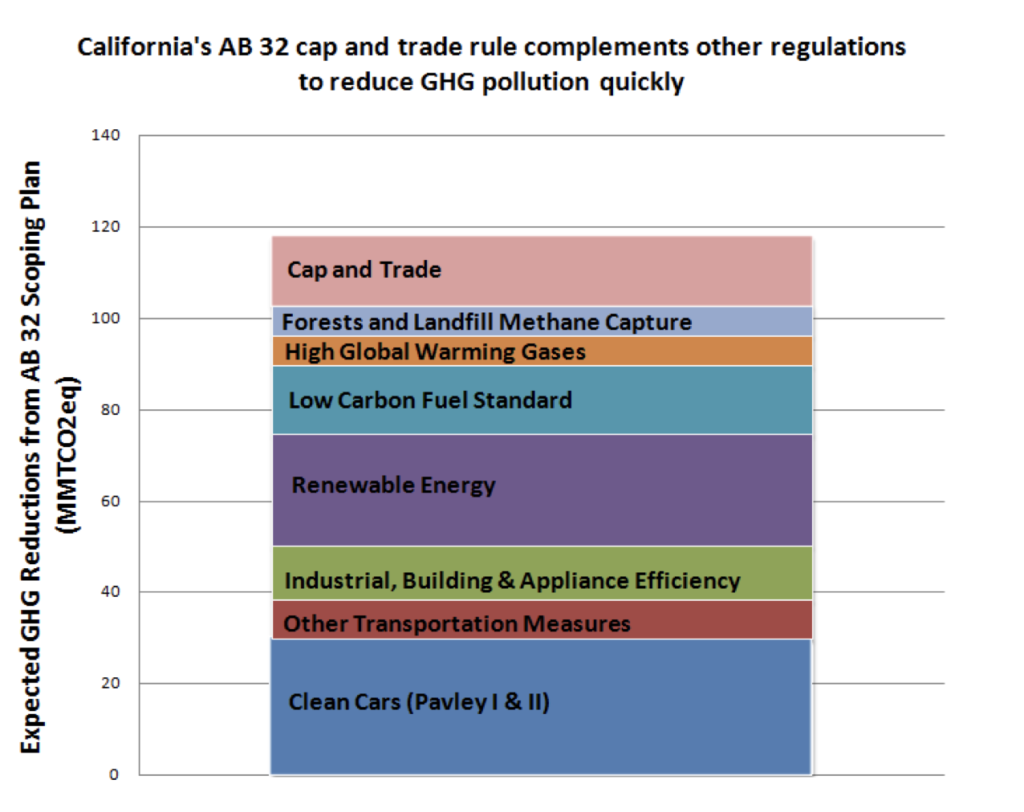
SIERRA SUES AGAIN
Following the approval of the new and improved CAP in February of 2018 with its flawed carbon offset mitigation scheme, the Sierra Club filed a lawsuit to prevent the CAP from moving forward because it simply did not fulfill the true state mandate of GHG reduction. Judge Taylor, by now, a seasoned expert in the intricacies of the Climate Action Plan, issued a sternly worded tentative ruling in September of 2018:
COURT: You, the county, went into this with your eyes open. You knew with a 100 percent degree of certainty that these folks over here were not going to take this lying down. They told you not to pass this the way that you did, and told you what they were going to do if you did pass it the way that you did, and the Board of Supervisors decided to go ahead anyway. I am not the architect of this problem. Okay? The county decided in the face of this challenge that they knew with a 100 percent certainty it was coming down the pipe to proceed. What did they think was going to happen? This — this was foreordained the day they voted in favor. The Sierra Club could not have been clearer in its intent, in stating its intention. [ROUGH HEARING TRANSCRIPTS – SEPT. 14, 2018]
The hearing on merits was held on December 21, 2018 and the judge issued a final ruling that the Climate Action Plan was invalid and that moving forward, a permanent injunction would be in place prohibiting development projects from using the M-GHG-1 mitigation measure (carbon offsets). Projects that do not use those measures can, however, proceed.
The County’s General Plan in its 2011 format stated that the CAP should achieve GHG [Green House Gases] emissions from the ‘unincorporated County’ and from ‘County operations,’ and yet the 2018 CAP allows essentially unlimited increases in GHG within the County. In this respect, applicants proposing projects in the County can meet their GHG mitigation requirements by purchasing offsets from anywhere in the world, in the discretion of the Director of a County department.
[RULING, SUPERIOR COURT OF CALIFORNIA, SAN DIEGO COUNTY – 12/24/2018]
While the ruling prohibited GPA projects from moving forward that used the out-of-county offsets, the judge was hesitant to issue an order invalidating or barring recently-approved projects from moving forward, citing “due process” meaning that the plaintiffs that are opposing those projects will need to make their case and the corresponding judges would need to assess the applicability of this ruling. These projects included Newland Sierra, and Otay 350, Otay Village 14, Harmony Grove Village South and Valiano, all of whom were subsequently litigated. And in the case of the latter two projects (in the town of Harmony Grove), the judges ruled in favor of the plaintiffs.
The County’s response was quite telling:
The County is disappointed in the court’s decision and is evaluating the ruling to determine next steps. Since adoption of the Climate Action Plan (CAP), the County has been working to implement actions outlined in the CAP in the unincorporated areas of the County and at County facilities. We are on track to meet the State mandated greenhouse gas targets for 2020 and 2030.
(CBS8) Judge rejects San Diego County’s climate action plan
On January 7th, 2019, the County Board of Supervisors voted to appeal the ruling (in a 3 to 2 vote with Supervisors Jacob and Fletcher dissenting).
Other lawsuits filed against County raised issues about the out-of-county mitigation.
In the fall of 2018, four general plan amendment projects were approved by the Board of Supervisors, Newland Sierra, Harmony Grove Village South, Valiano and Otay 350, and despite the ruling, relied on carbon offsets to mitigate their GHG impacts. The first project-related lawsuits against the County were filed by the Elfin Forest / Harmony Grove Town Council in October 2018 against the County and the developers of Harmony Grove Village South (Kovach Group) and Valiano (Integral Communities). Their primary cause of action was focused on increased fire risk to the existing community due to the fire entrapment that would inevitably be caused by an additional 2200 evacuees attempting to escape on a single, unimproved two lane country road. They are located in a CalFire designated “very high fire hazard severity zone.” But the GHG issue was also raised among several other issues including lack of affordability and general plan consistency. On the GHG issue, the plaintiff’s briefs relied heavily on aforementioned ruling by Judge Taylor in the Sierra Club CAP lawsuit.
In February of the following year, Superior Court Judge Bacall ruled in favor of the Town Council and ordered the County to rescind the approvals of both projects citing fire safety, affordability and, importantly, flawed GHG mitigation, citing Taylor’s ruling extensively. These were the first of numerous lawsuits to come on specific projects that relied on the Sierra Club arguments. In April 2020, the County Board of Supervisors, voted to appeal the decision that overturned their approvals of these two projects.
County appeal of Sierra Club action attempts to double down on carbon offsets by comparing to cap-and-trade
In its appeal, the County challenged the court’s judgment to set aside the CAP and the ruling that further projects could not rely on the carbon offset mitigation scheme (M-GHG-1). They argued that it would only use offset registries approved by the state, the same ones being used in the states cap-and-trade program, so therefore it was appropriate.
On June 12, 2020, the appellate court upheld Taylor’s decision, specifically that the carbon offset scheme was “unlawful” and, unlike the state’s cap-and-trade program it was unlimited in scope, lacked geographic specificity and there was no way to ensure that the offsets were “real, additional, quantifiable, permanent, verifiable and enforceable.” Essentially, the appellate court ruled that no projects can go forward that rely on the M-GHG-1 carbon offset scheme and the Climate Action Plan is invalid. This pretty much put an end to the CAP saga and the County will need to go back to the drawing board. There is a chance that the County will appeal to the state Supreme Court, but it is likely that the court will refuse to take the case and the appeal will stand.
In the meantime, the County has been holding workshops on local GHG offsets, presumably because they feel that offsets are still going to be an important part of the future CAP. In one workshop, Jon McDougal, an executive at offset registry firm Element Markets, spelled out what the market for offsets looks like and stated that the demand for offsets in San Diego County is about one fifth the total nationwide demand for offsets, which is a staggering number. All of it is coming from the approved and proposed GPA projects that the county is processing. The massive demand for offsets the County has created to mitigate the GPA projects should be a signal that perhaps we need to just say no to most if not all of these projects.
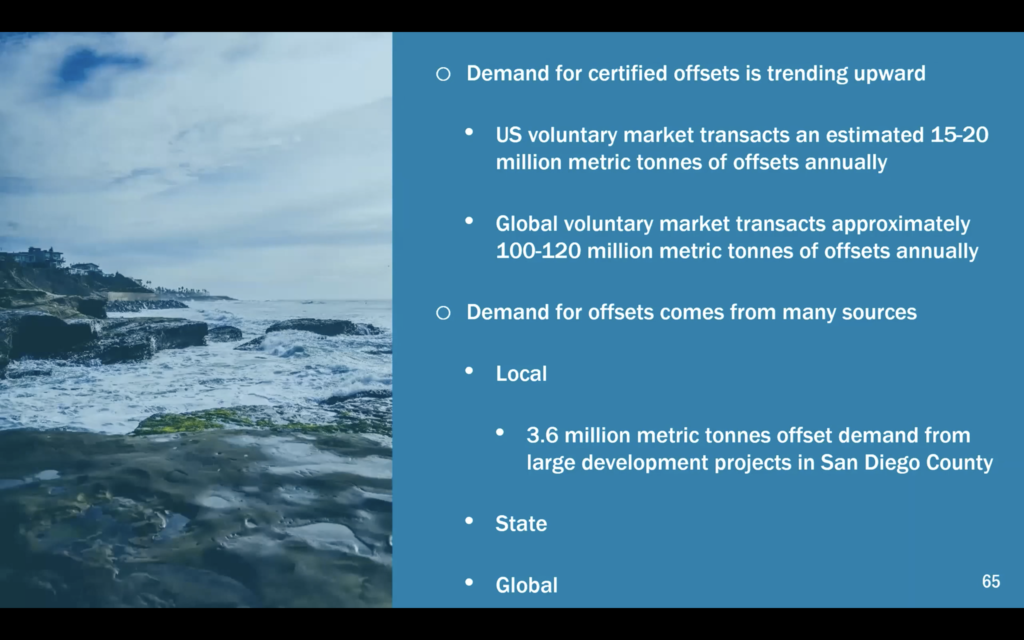
After 6 rulings in almost a decade, against the County, it would appear that the County needs to get serious about implementing a CAP that achieves the states climate change goals, respects the general plan and improves the quality of life here in San Diego County.


